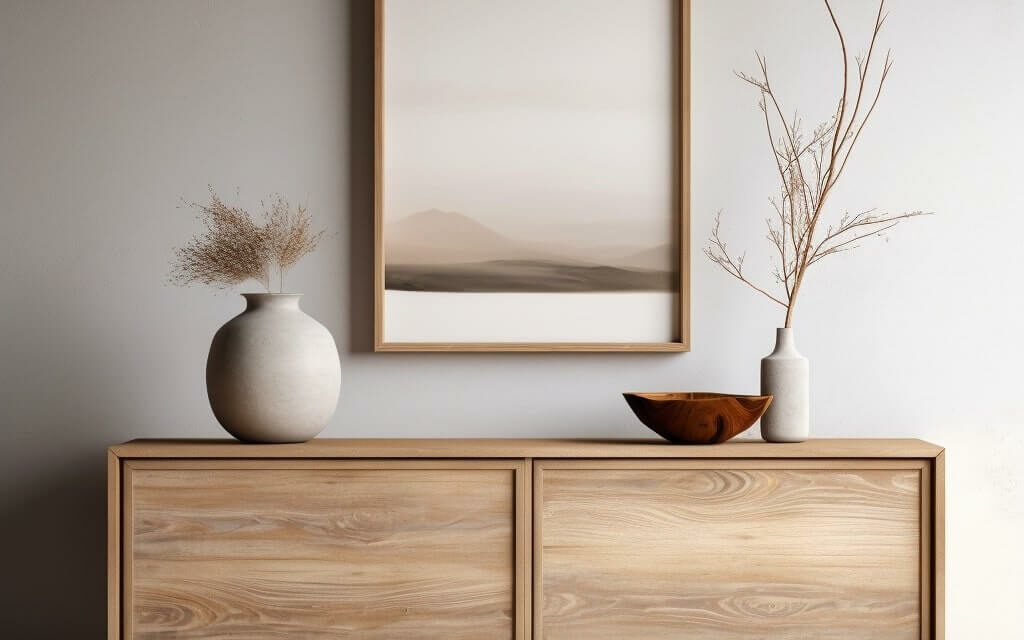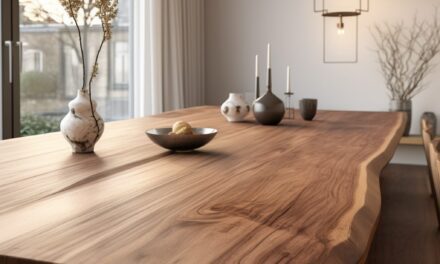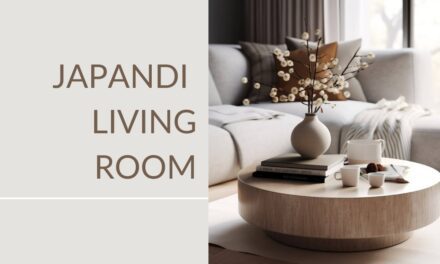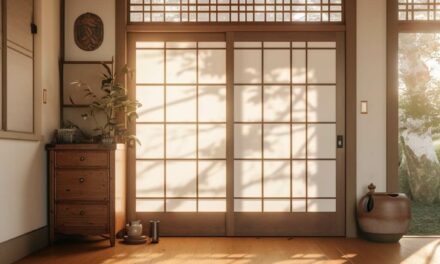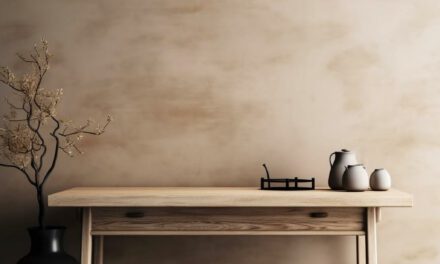A cornerstone of the Japandi style for your living room, entryway or hallway is the Japandi sideboard.
More than just furniture, it’s a statement piece that fuses form and function, amplifying the understated elegance intrinsic to Japandi.
From offering versatile storage solutions to serving as an artistic centerpiece, the sideboard is an essential element that adds depth, character, and thoughtful organization to any Japandi-inspired home.
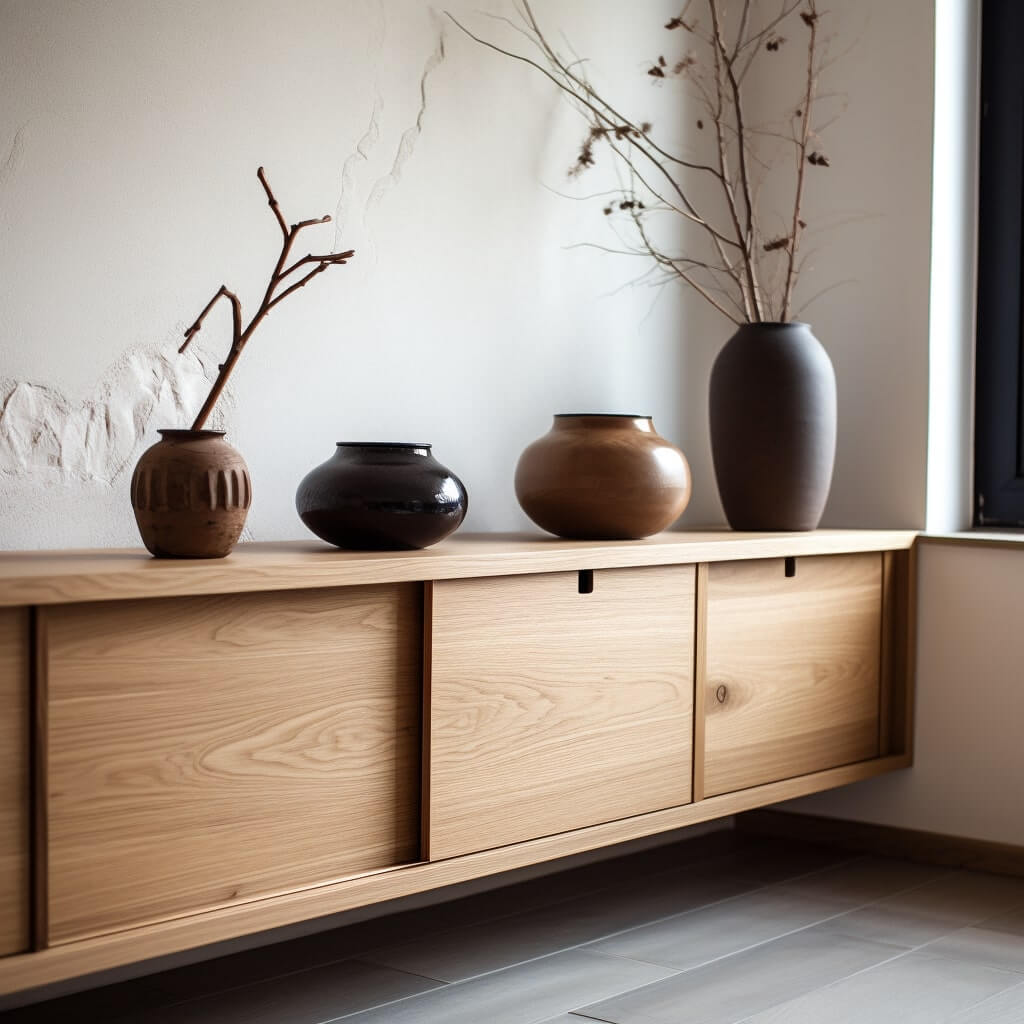
This post may contain Amazon affiliate links which means I may receive a small commission for purchases made through the links. I only recommend products that I love!
My 10 Favorite Japandi Sideboards on Amazon
1, Handmade Japanese Style Black Walnut Sideboard

2. Fluted Oak mopio Ensley Sideboard

3. POVISON Solid Walnut Sideboard

4. mopio Golden Oak Sleek Sideboard

5. Nathan James Liam Oak Sideboard

6. kevinplus Walnut Sideboard

7. Nathan James Logan Modern Rattan Sideboard

8. Low Profile Fluted Oak Sideboard

9. mopio Haylee Natural Oak & Rattan Sideboard

10. Finnhomy Sideboard With Hand Made Rattan Decorated Doors

The Role of Japandi Sideboards in Interior Design
In the realm of Japandi design, the sideboard is far more than a simple piece of furniture.
It is an embodiment of the design principles that define this unique style: multi-functionality, space optimization, and the harmonious blending of various Japandi decor elements.
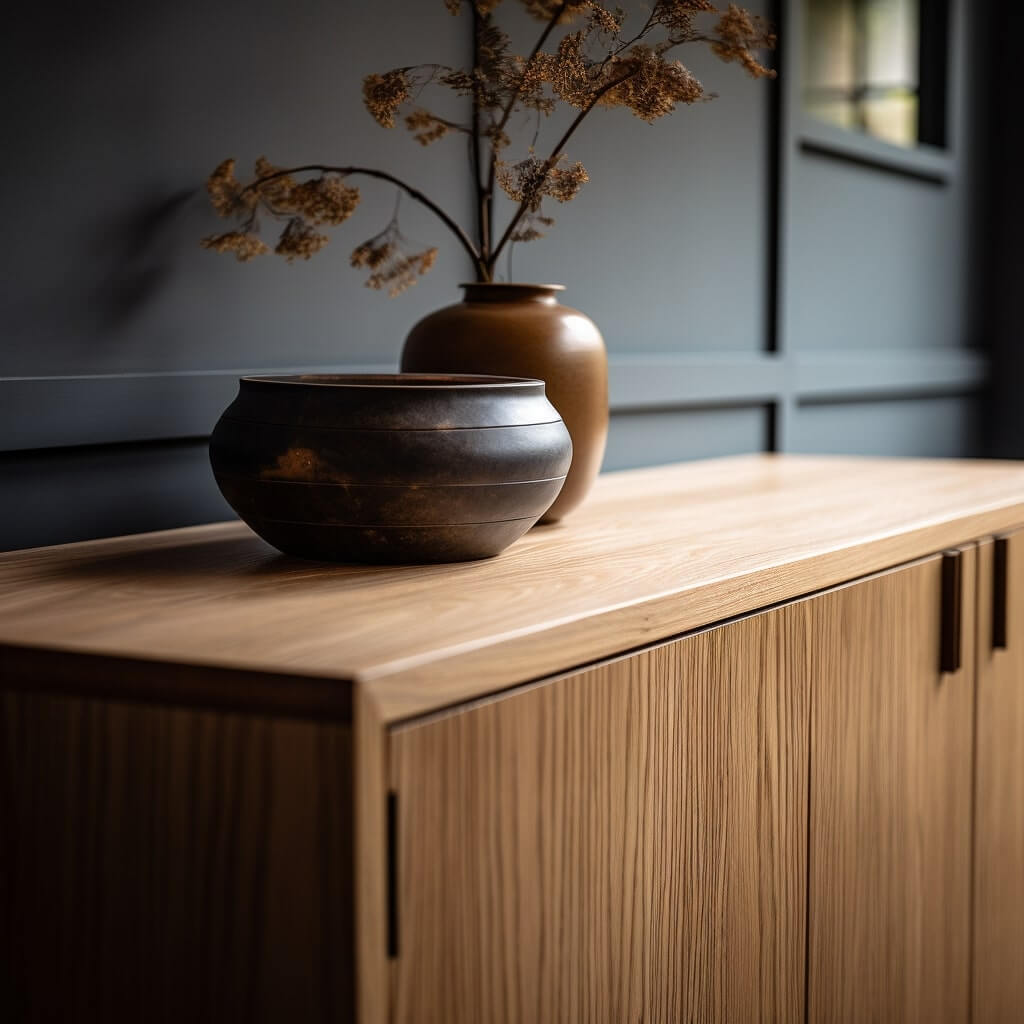
Multi-functionality and Aesthetics
Japandi is all about fusing form and function, and sideboards play a pivotal role in achieving this balance.
More than just a storage unit, a Japandi sideboard acts as a canvas where the dance of aesthetics and practicality takes place.
It holds our essential items, all the while gracing our living spaces with a quiet elegance that speaks volumes about the simplicity and understated beauty of Japandi design.
The layout, style, and proportion of the sideboard, with its seamless drawers and open compartments, are intricately designed to offer organized storage while maintaining an aesthetic appeal that complements the Japandi theme.
Making the Most of Small Spaces
Japandi design thrives in the art of capitalizing on small spaces, bringing out their full potential without leading to clutter or a cramped feeling.
A Japandi sideboard aligns perfectly with this philosophy.
With its smart design and versatile functionality, a sideboard can serve multiple purposes, from a media console in your living room to a spacious dresser in your bedroom, or even as an extra serving area in your dining space.
With a well-chosen sideboard, every square inch is used wisely, and room flow is enhanced. It’s the answer to the eternal question of how to create more space without sacrificing style.
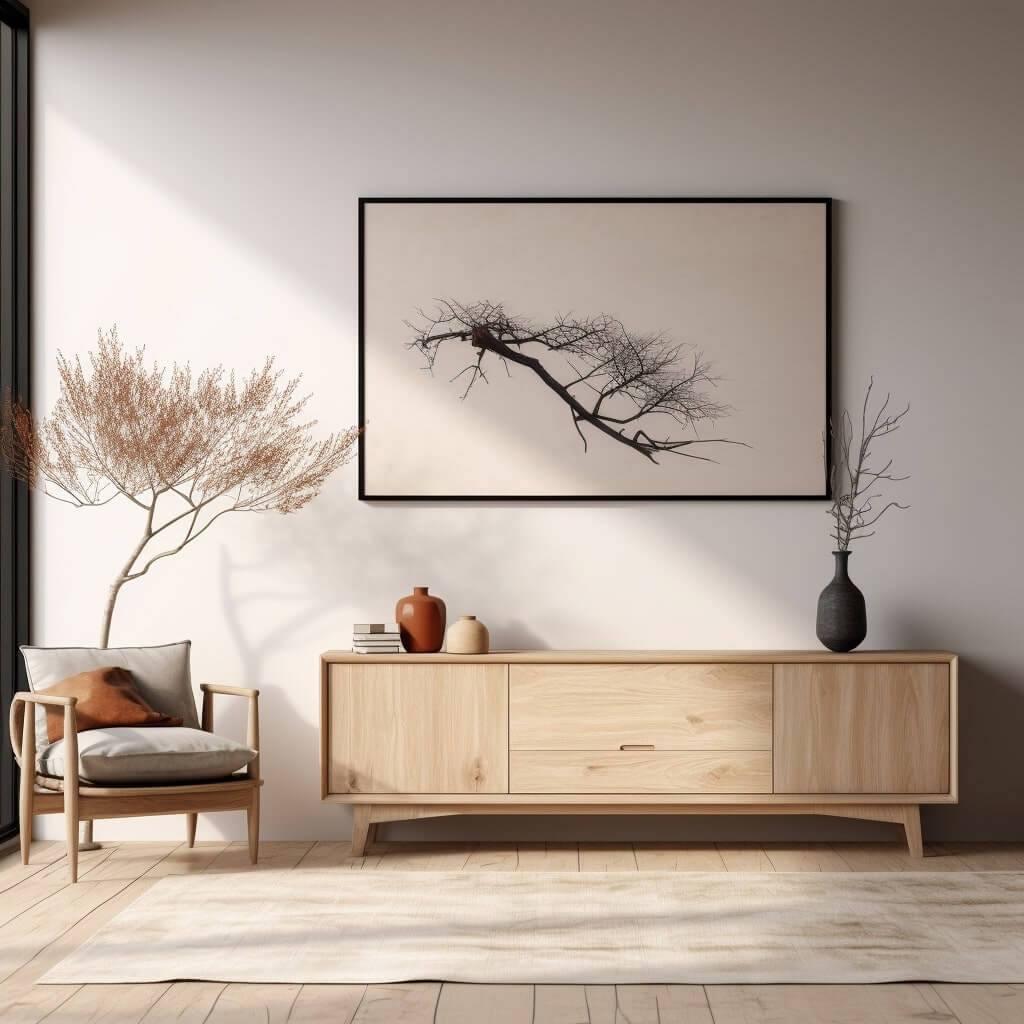
Integration with Other Decor Elements
Another key tenet of Japandi design is the harmonious blending of every element in a room.
A sideboard isn’t a standalone piece but an integral part of the overall decor.
It works in synergy with other elements such as wall colors, lighting fixtures, artwork, and textiles, and serves as a bridge that pulls everything together into a cohesive, visually pleasing whole.
It’s about finding that perfect sideboard that not only complements your other furniture pieces but also accentuates them, forming a seamless aesthetic dialogue that epitomizes the Japandi ethos.
Whether it’s through contrasting or matching color schemes, coordinating styles, or balancing proportions, a Japandi sideboard can tie a room together and elevate the overall look and feel of your space.
Note: Japandi style also works very well in combination with a retro look. I.e., Retro Japandi. I think Japandi sideboards always have a 70s retro look to them!
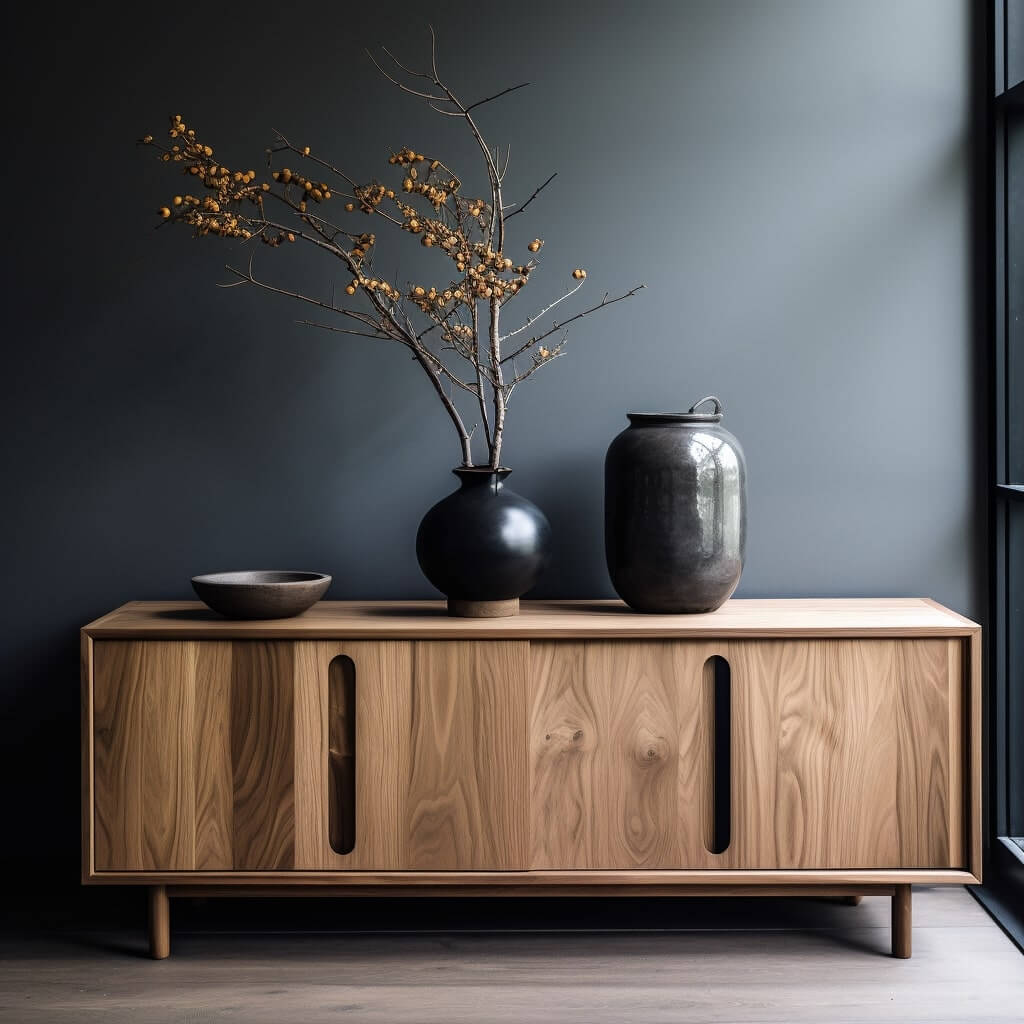
Choosing the Perfect Japandi Sideboard
When choosing a Japandi sideboard, it’s crucial to consider the material, design, color, and texture to ensure it aligns with the ethos of this design style.
Here’s a closer look at these elements to guide your decision-making process.
Material Considerations for Your Japandi Sideboard
At the heart of Japandi design is an emphasis on natural materials, sustainability, and respect for the environment.
These values reflect in the choice of materials for a Japandi sideboard.
The goal is to select pieces that embody the beauty of nature, resilience, and longevity.
Hardwoods like oak, walnut, and teak are common choices for their durability and timeless appeal.
They bring a sense of warmth and organic beauty to your space.
The grain patterns and nuances in wood lend each sideboard a unique personality, infusing a touch of character and life into your home.
A Japandi sideboard should not only be functional and beautiful but also sustainable.
This can mean choosing pieces made from reclaimed or responsibly sourced wood, or sideboards that have been crafted with a minimal carbon footprint.
In a world increasingly aware of our environmental impact, a sustainable Japandi sideboard can be a statement of your commitment to preserving our planet.
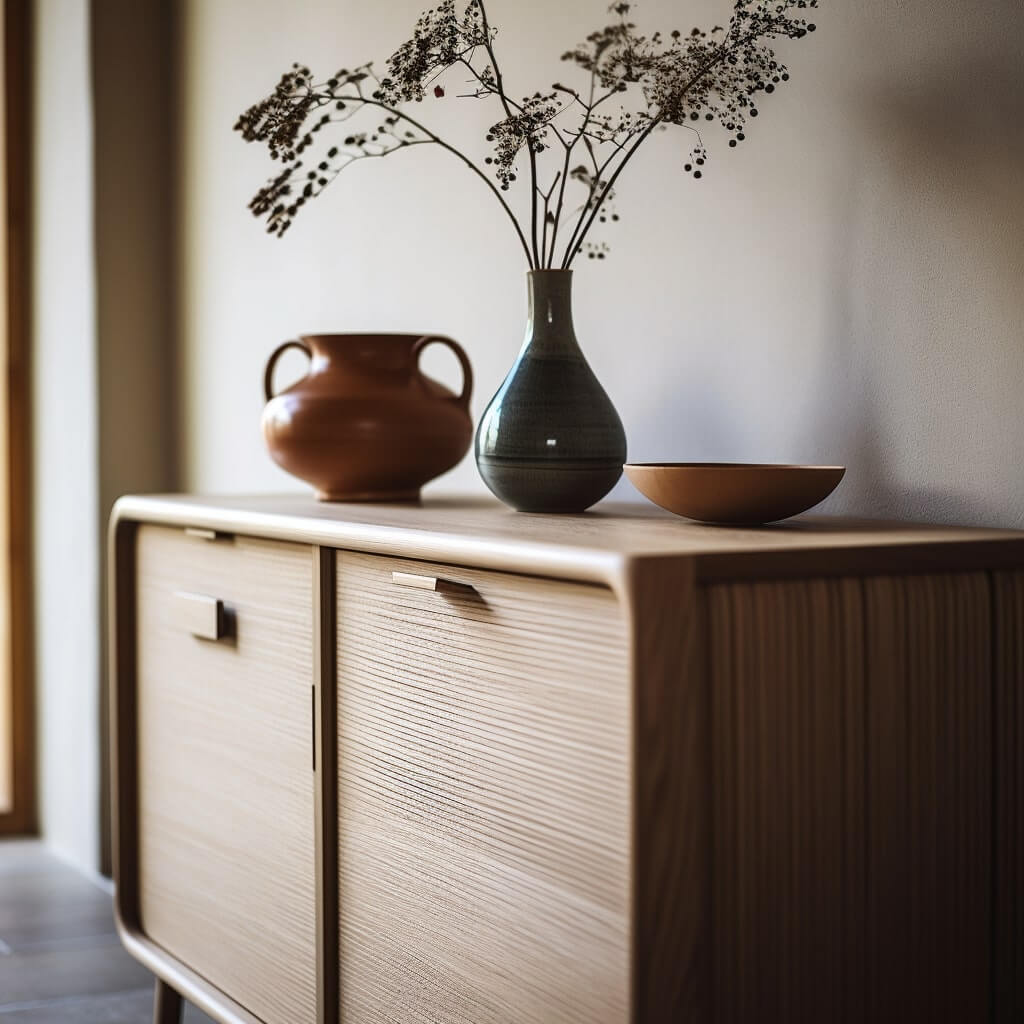
The Power of Minimalist Design
The magic of Japandi design lies in its simplicity and minimalist approach.
A Japandi sideboard embodies these principles through its clean lines, functional design, and exquisite craftsmanship.
There are no unnecessary embellishments or ornate details.
Instead, the focus is on a thoughtful design that marries utility with understated elegance.
The craftsmanship shines through the perfect alignment of drawers, the smooth finish, and the balanced proportions.
Each feature is there for a reason, contributing to a harmonious blend of aesthetics and practicality.
Look for sideboards with a streamlined silhouette, uncluttered surfaces, and seamless storage solutions.
These elements highlight the sideboard’s purpose while adding a sophisticated charm to your space.
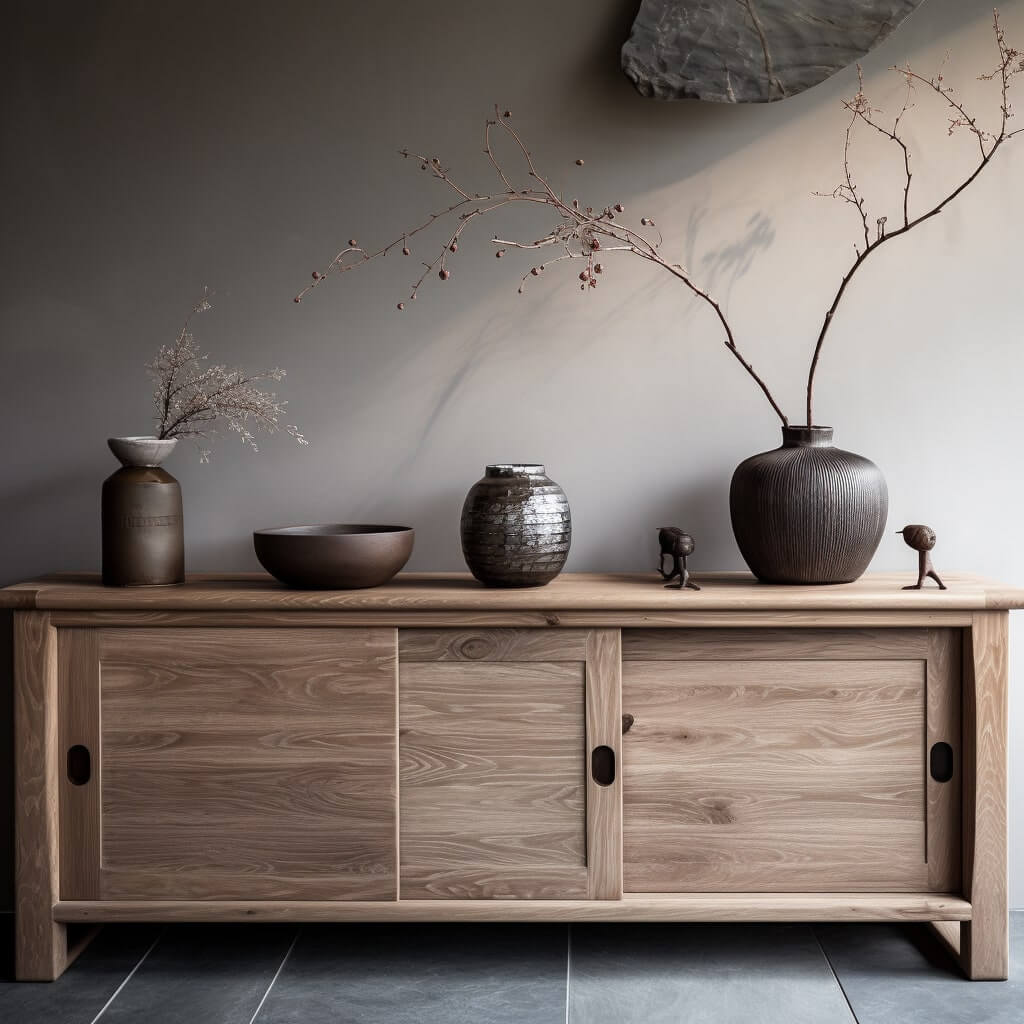
Color Palette and Texture
The Japandi color palette is a symphony of earthy, neutral tones that exude tranquility and serenity.
When choosing a Japandi sideboard, look for shades that echo the soothing hues of nature.
Creams, light grays, muted greens, or the warm tones of natural wood can infuse your space with a calm, grounded atmosphere.
Texture plays a pivotal role in Japandi design as well.
The juxtaposition of smooth surfaces with more tactile elements creates a delightful sensory experience.
The grain of the wood, the cool touch of metal handles, or a sideboard paired with a textured decor piece, like a woven basket or a rough-hewn ceramic vase, can add layers of interest to your space.
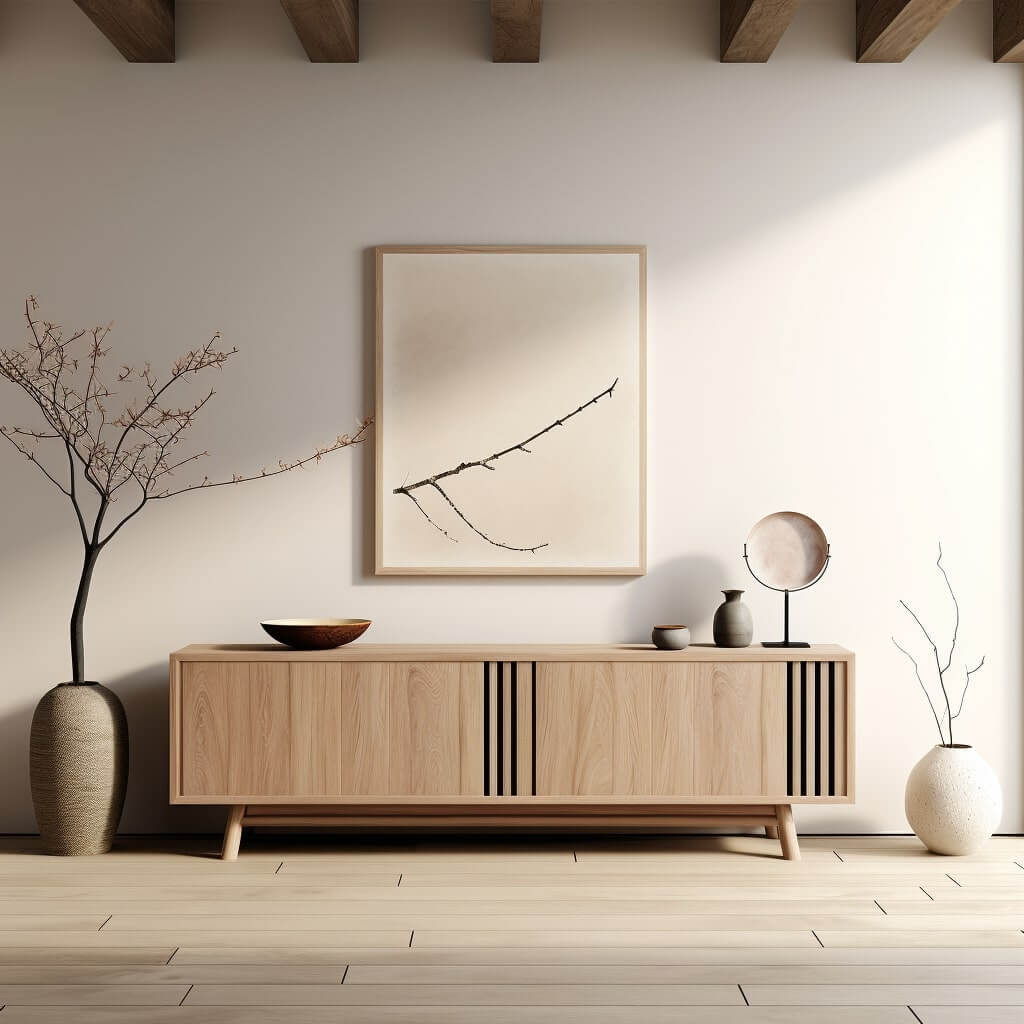
The Emotional Impact of Japandi Sideboards
A Japandi sideboard offers more than a stylish storage solution – it has the power to influence our emotions, shaping the overall atmosphere of our homes.
Evoking a Sense of Calm and Order
At the core of Japandi design is the aspiration to create serene, balanced spaces.
A Japandi sideboard, with its clean lines, natural materials, and earthy colors, promotes a sense of calm.
The organized storage solutions it provides allow us to keep our surroundings tidy and clutter-free, inducing a soothing sense of order and tranquility.
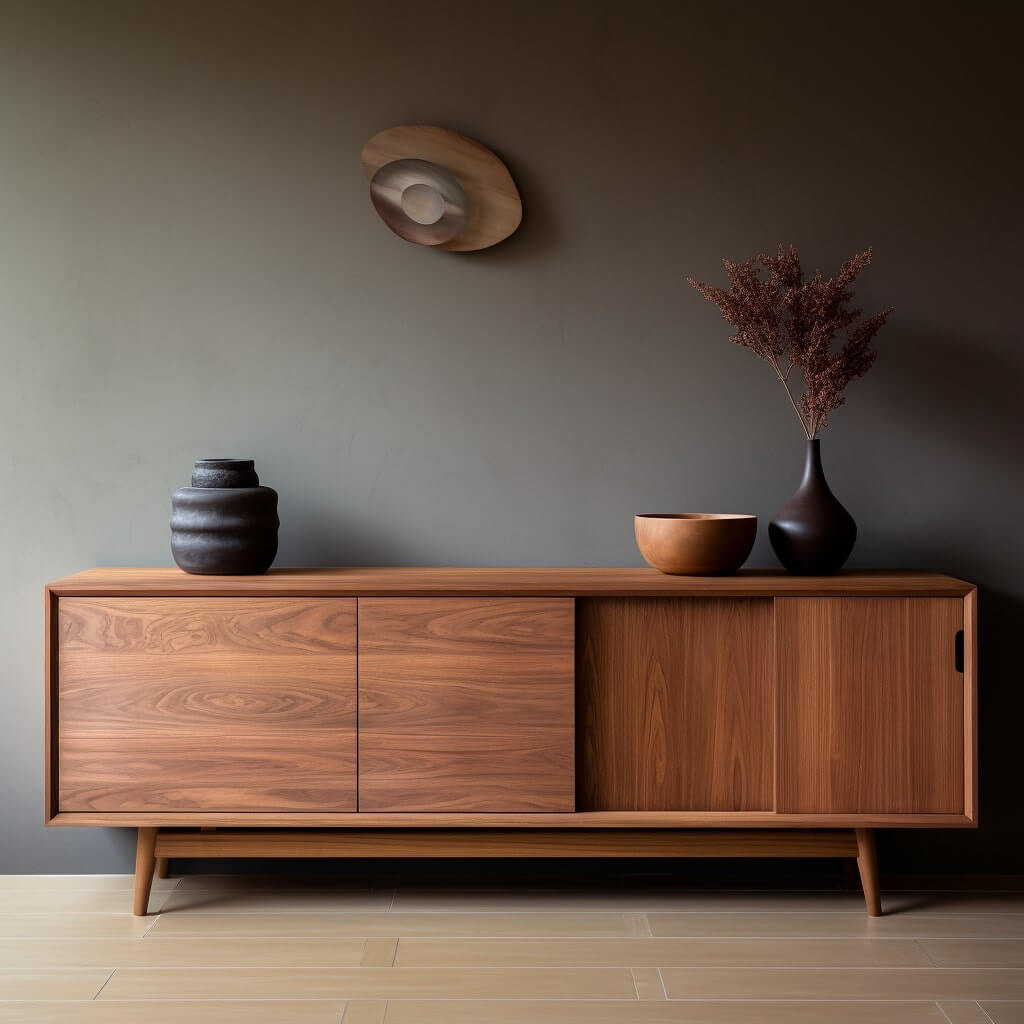
Inspiring Mindful Living
A Japandi sideboard isn’t merely about aesthetic appeal. It’s a symbol of the mindful lifestyle that Japandi encourages.
The emphasis on functionality, minimalism, and sustainability prompts us to be more conscious of our consumption, to value quality over quantity, and to appreciate the beauty in simplicity.
This awareness and mindfulness can permeate other aspects of our lives, leading to a more balanced, fulfilled existence.
Decoration and Storage Solutions with Japandi Sideboards
A Japandi sideboard is both a stunning decor element and a practical storage solution, contributing to the functionality and visual appeal of your living space.
Decor Ideas for Your Japandi Sideboard
Complementing your Japandi sideboard with the right decor items can enhance its beauty and the overall aesthetic of your room.
Choose pieces that resonate with the Japandi philosophy of natural, minimalist elegance. A ceramic vase with a simple flower arrangement, a minimalistic lamp, or an abstract artwork in subdued tones can elevate the look of your sideboard.
Additionally, incorporating organic elements, such as a pot of lush greenery or a bowl of smooth river stones, can bring a touch of nature indoors, enhancing the tranquility of your space.
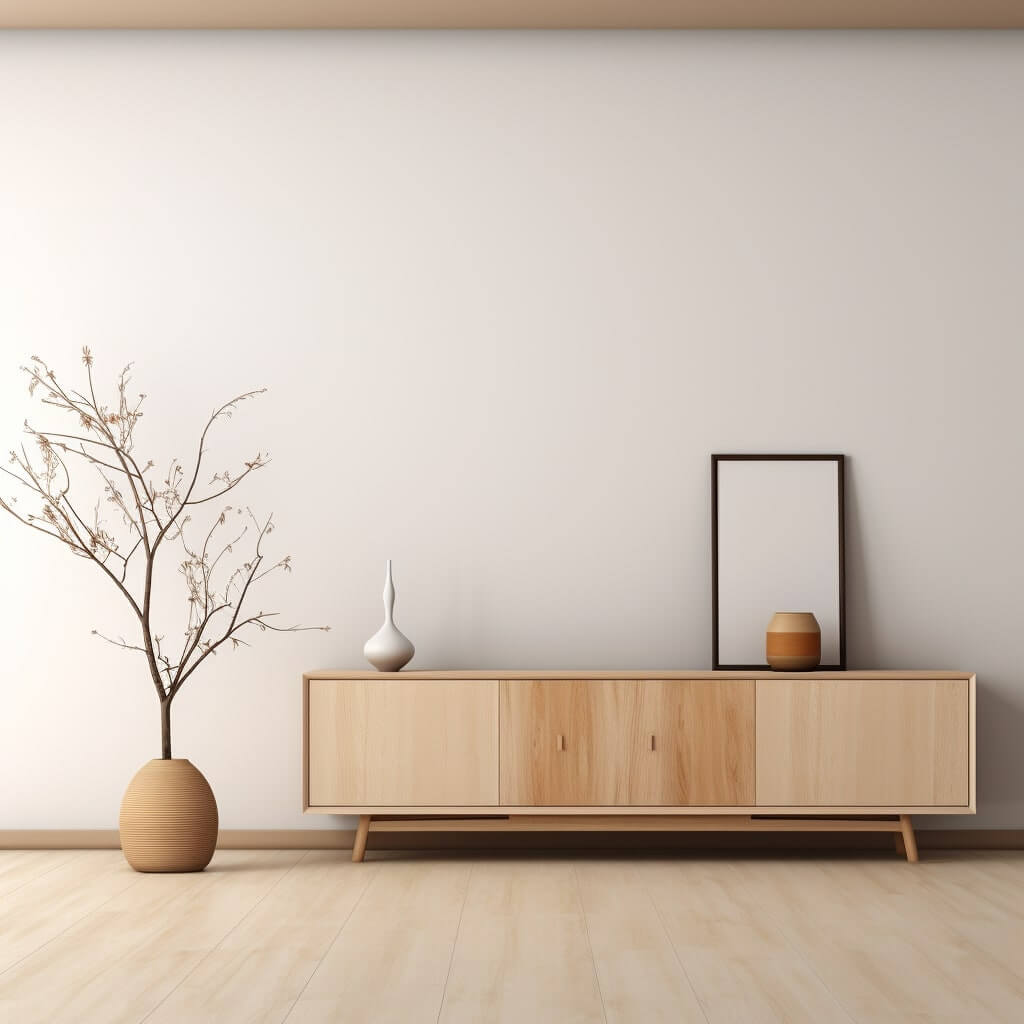
Efficient Storage Solutions using Japandi Sideboards
The storage capabilities of a Japandi sideboard are vital to maintaining a clutter-free, peaceful environment.
The mix of open and closed compartments allows you to organize your belongings effectively.
Store items you use daily in easy-to-reach spots, while less frequently used or unsightly items can be tucked away behind closed doors.
Baskets and dividers can be used inside drawers for additional organization.
The sideboard thus serves a dual purpose: a stylish, aesthetically pleasing piece and a functional, efficient storage solution that aids in preserving the calm, orderly ambiance that defines Japandi style.
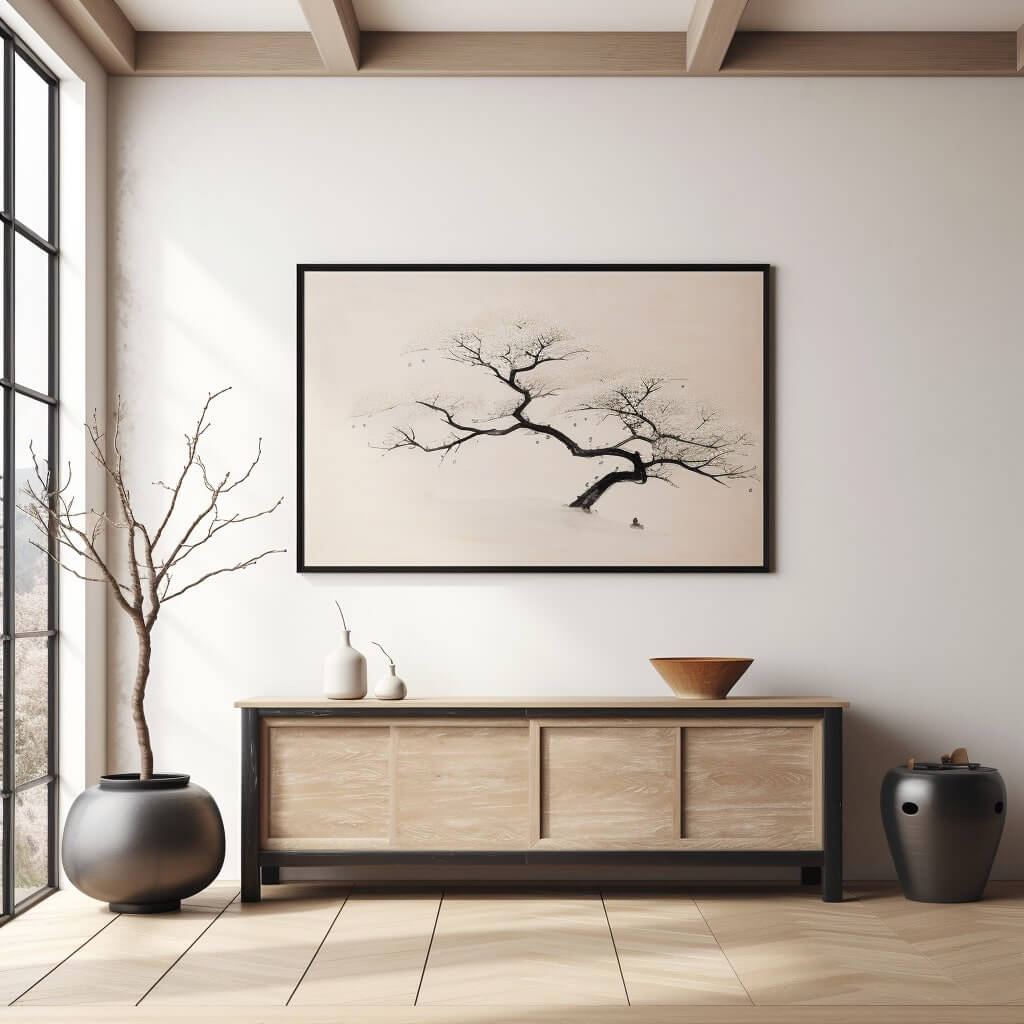
How to Maintain and Care for Your Japandi Sideboard
Preserving the beauty and longevity of your Japandi sideboard involves regular cleaning, handling minor repairs, and adopting sustainable practices.
Cleaning Tips for Your Japandi Sideboard
Regular cleaning can maintain the fresh look of your Japandi sideboard.
Use a soft, dry cloth for routine dusting, and a slightly damp cloth for stubborn spots.
Avoid harsh cleaners; instead, opt for mild soapy water or a cleaner specially designed for wood furniture.
Ensure to dry the surface immediately after cleaning to prevent water stains.
It’s also advisable to periodically polish your sideboard using a high-quality, non-silicone furniture polish to enhance its sheen and protect the wood.
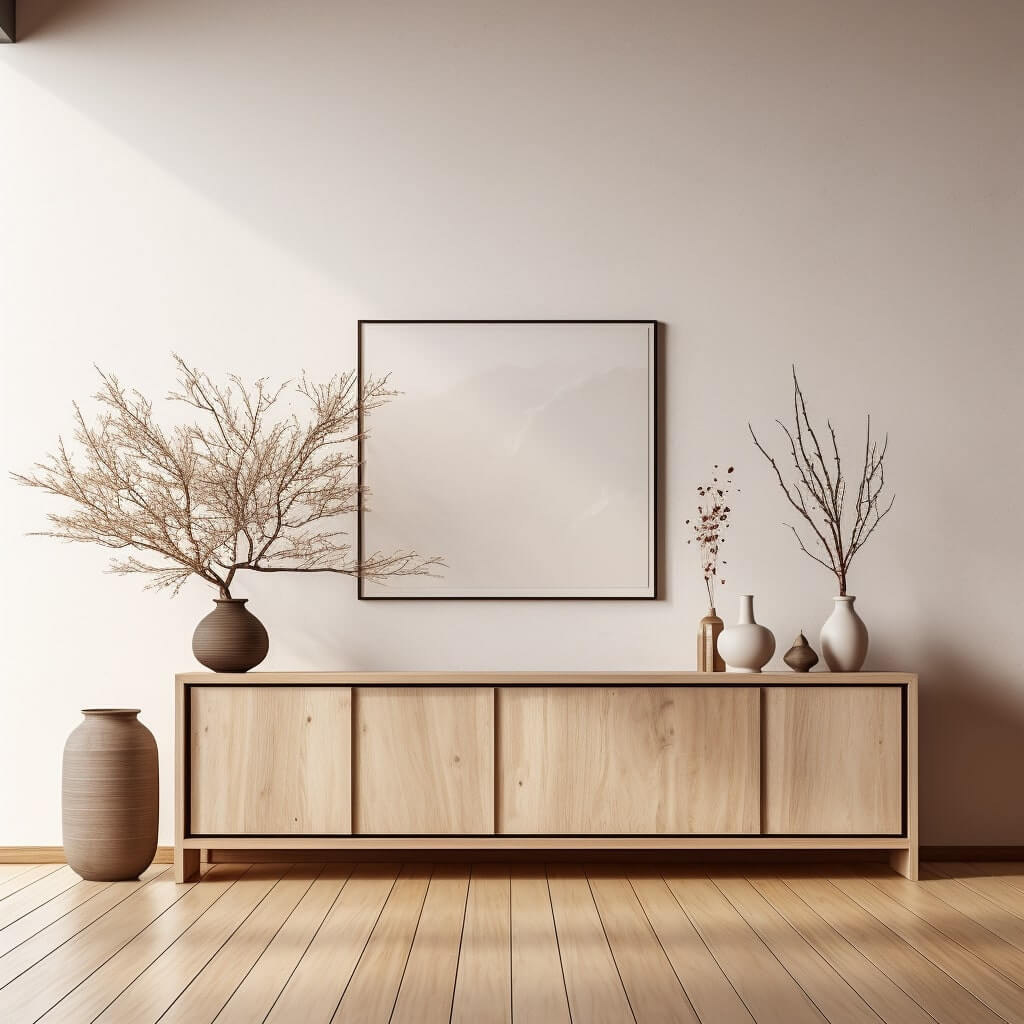
Handling Minor Repairs and Scratches
Over time, your sideboard may accumulate scratches or minor damage.
A touch-up marker or a blend of oil and vinegar can help camouflage light scratches.
For deeper marks, you might need to consider professional help.
When moving the sideboard, always lift rather than drag to prevent damage to both the furniture and the flooring.
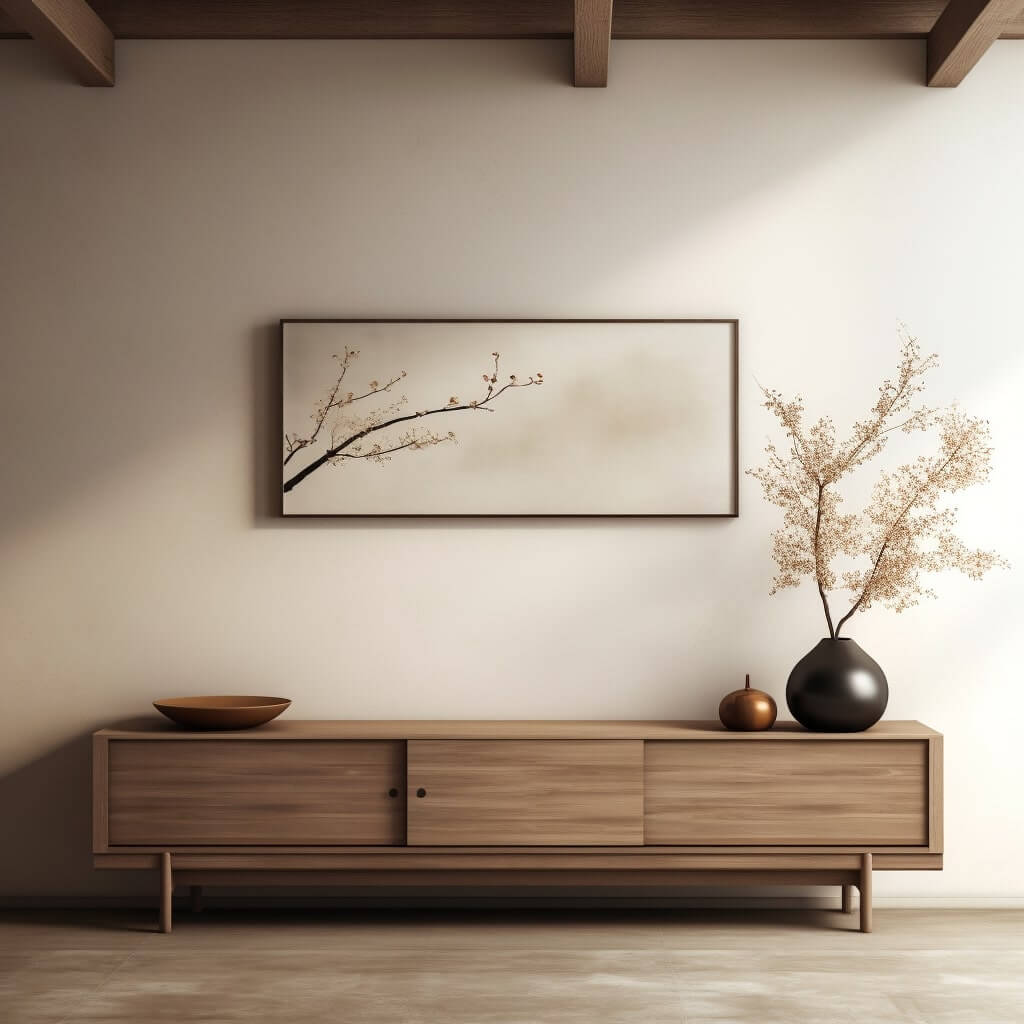
Sustainable Practices for Longer Lifespan
To prolong your sideboard’s lifespan, avoid placing it near heating vents or in direct sunlight, as extreme temperatures and sunlight can cause wood to warp or fade.
Use coasters under beverages and pads under hot dishes to prevent stains and heat damage.
Also, rotate decorative items regularly to avoid uneven coloration.
The ethos of Japandi style extends to the care of your sideboard too – it’s about treasuring the item and using it mindfully, which in turn contributes to sustainability by reducing the need for replacement.
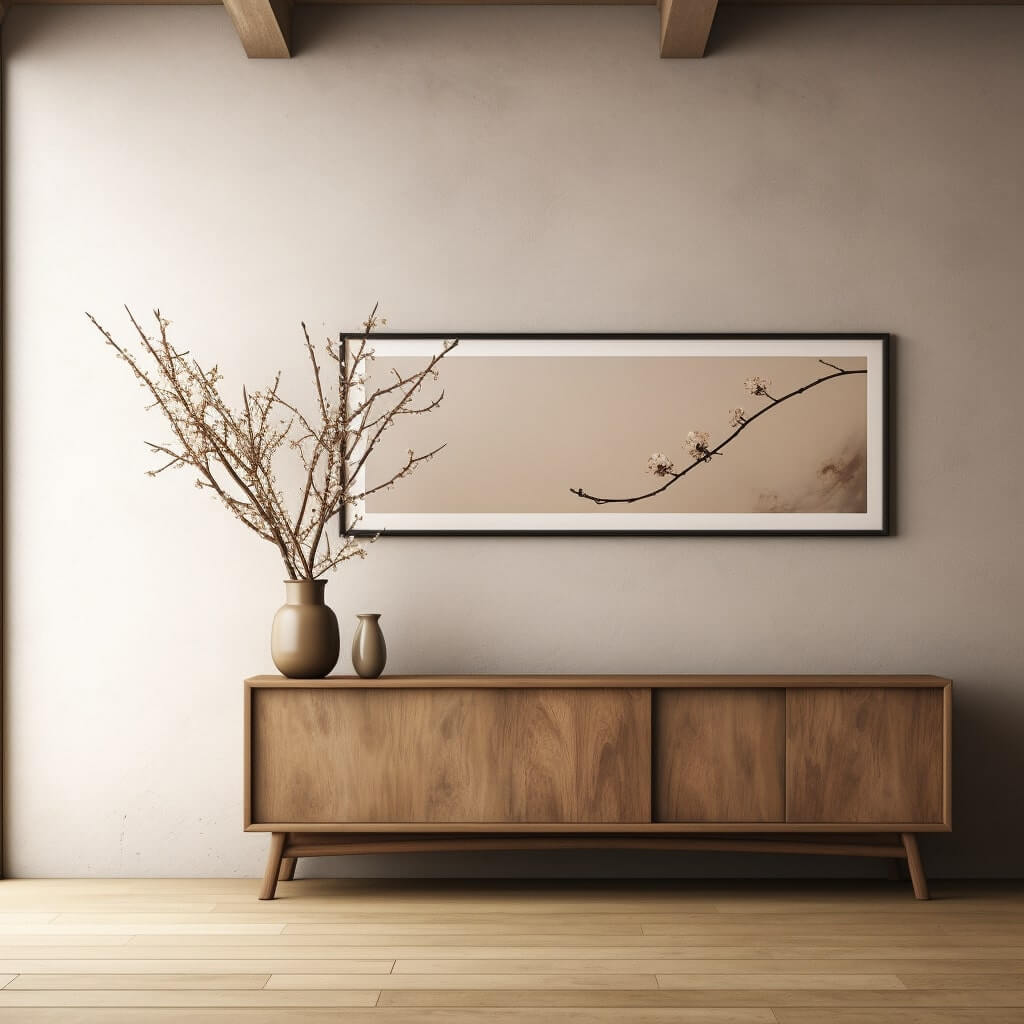
FAQs
What are the characteristics of Japandi furniture?
Japandi furniture is characterized by simplicity, functionality, and minimalism. It emphasizes clean lines, natural materials, and a balanced blend of the airy, cozy Scandinavian style with the refined, minimalist aesthetic of Japanese design.
What are the materials used in Japandi?
Japandi primarily uses natural, sustainable materials like hardwoods – oak, teak, and walnut are common. These materials reflect the design’s emphasis on environmental respect and the beauty of nature.
What is the history of Japandi?
Japandi is a relatively recent design trend that merges Japanese minimalism and Scandinavian functionality. It arose in the 21st century, capturing global attention for its emphasis on simplicity, sustainability, and mindful living.
What is a sideboard also known as?
A sideboard is also known as a buffet, credenza, or console. Its name can vary based on its function or location, like a “server” in the dining room or a “media console” in the living room.
What are the tips to consider when choosing a sideboard unit?
When choosing a sideboard, consider its purpose, size, material, color, and design. Ensure it aligns with your interior style, provides adequate storage, and fits comfortably within your space.
What should a sideboard include?
A sideboard typically includes a combination of shelves, drawers, and cabinets. This combination provides versatile storage, allowing you to organize a variety of items neatly and efficiently.
Where should a sideboard be placed?
A sideboard can be placed in various locations depending on its purpose. It can be used in the dining room as a buffet, the living room as a media console, or even in the bedroom for extra storage.
What’s the purpose of a sideboard?
The purpose of a sideboard is twofold: it serves as a storage solution and a decorative element. It offers space to store items, reducing clutter, while its surface can display decor, enhancing the aesthetics of a room.







